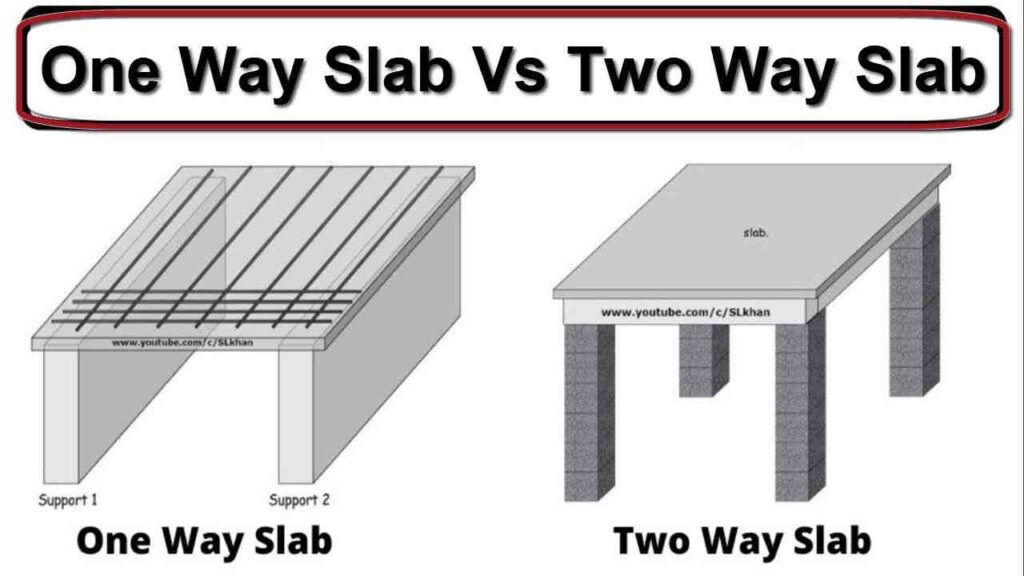
Discover 10 Key Difference between one way slab and two way slab
One way slabs and two way slabs are two common types of reinforced concrete floor systems. Understanding the 10 difference between one way slab and two way slab is crucial for architects and engineers to ensure safe and efficient construction.
10 Difference between one way slab and two way slab
Structural Behavior:
One-way slab: Primarily resists bending in one direction.
Two-way slab: Resists bending in two perpendicular directions.
Load Distribution:
One-way slab: Transfers loads to supporting beams in one direction.
Two-way slab: Transfers loads to supporting beams in both directions.
Reinforcement Placement:
One-way slab: Reinforcement bars are placed in one direction, typically spanning the shorter span.
Two-way slab: Reinforcement bars are placed in both directions, creating a mesh-like pattern.
Span-to-Depth Ratio:
One-way slab: Usually suitable for longer spans with lower depth-to-span ratios.
Two-way slab: Ideal for shorter spans with higher depth-to-span ratios.
Slab Thickness:
One-way slab: Uniform thickness throughout.
Two-way slab: Thickness may vary to account for differing spans and loads.
Construction Complexity:
One-way slab: Simpler construction process due to fewer directions of reinforcement.
Two-way slab: More complex construction process due to additional reinforcement placement.
Economical Considerations:
One-way slab: Often more cost-effective for longer spans and uniform loads.
Two-way slab: Preferred for shorter spans and irregular loads due to better load distribution.
Deflection Control:
One-way slab: Slightly higher deflection due to limited reinforcement in one direction.
Two-way slab: Better deflection control due to reinforcement in both directions.
Formwork Requirements:
One-way slab: Generally requires less formwork due to simpler structural arrangement.
Two-way slab: Requires more formwork to accommodate reinforcement in both directions.
Design Flexibility:
One-way slab: Limited design possibilities compared to two-way slabs.
Two-way slab: Offers more design flexibility, allowing for various architectural shapes and configurations.
These differences highlight the contrasting characteristics of one-way and two-way slabs, influencing their structural behavior, construction complexity, and suitability for different span lengths and load conditions.
The 10 difference between one way slab and two way slab lies in their load distribution mechanisms. While one way slabs primarily transfer loads in one direction, two way slabs distribute loads in both directions, making them suitable for larger spans and heavier loads.